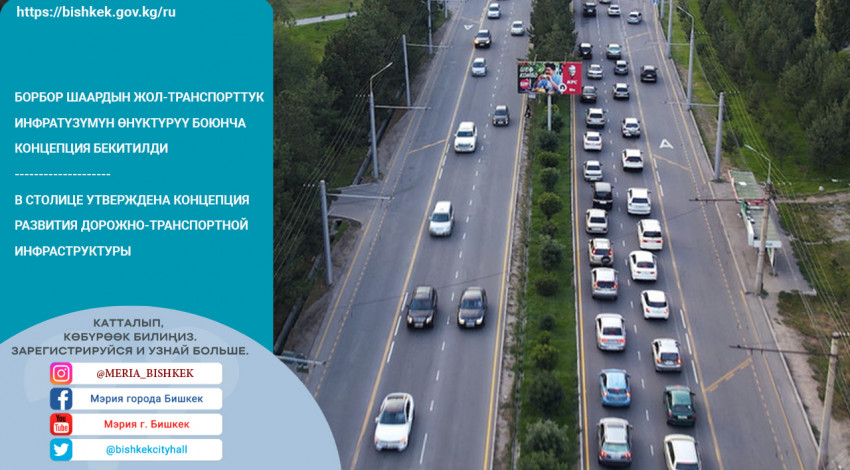The Mayor's Office of Bishkek City adopted a resolution "On Approval of the Concept of Road Transport Infrastructure Development and Reduction of Traffic Congestion in Bishkek City".
The Concept of development of road transport infrastructure and reducing traffic congestion in Bishkek for 2024-2030 defines short-term and medium-term objectives, as well as priority areas of work of the Mayor's Office of Bishkek to address the problems of traffic congestion in Bishkek.
As part of the implementation of the above concept, large-scale projects are planned in Bishkek, such as the construction of bridges, modernization of road infrastructure, road piercing, organization of bike lanes on the roadway, unification of dedicated lanes in a single system, organization of one-way traffic, regulation of parking space (hourly electronic parking), increasing the number of places and parking lots for storing bicycles, organization of transport and interchange hubs and intercepting parking, optimization of the route network, and others
The implementation of the Automated Traffic Management System (ATMS), the main objective of which is to reduce congestion and improve road safety, will be actively continued.
At the entrance points to Bishkek city, it is planned to create at least 2 convenient and modern transport and transfer hubs at the intersection of the main intercity and interregional routes of land public transport, connecting the transport arriving from the regions with public urban transport running from the city.
Thus, the main goal of the concept of road transport infrastructure development is to reduce traffic congestion by increasing the capacity of the city's street and road network, preventing traffic collapse, creating favorable, comfortable and safe conditions for passenger movement.
As a result of implementation of the Concept for 2024-2030 years is forecasted:
- Reduction of the number of passenger cars moving in the city center up to 20%;
- reduction of traffic congestion by 30%;
- increase in the capacity of vehicles at intersections by 30%;
- increase in the average operating speed of the traffic flow by 30%;
- increase of free space on the street and road network up to 35-40%;
- increase in the average operating speed of buses on the route by 30-40 %;
- achievement of regularity of bus service and reduction of traffic interval on the route up to 80%;
- full coverage of the city territories by public transportation.
- bringing the level of public transport use by the city population to 60-70% (bringing the daily passenger flow to an average of 700-900 thousand trips per day);
- reducing the negative environmental impact of public transport rolling stock by 50%;
- widespread development of bicycle transportation infrastructure.

